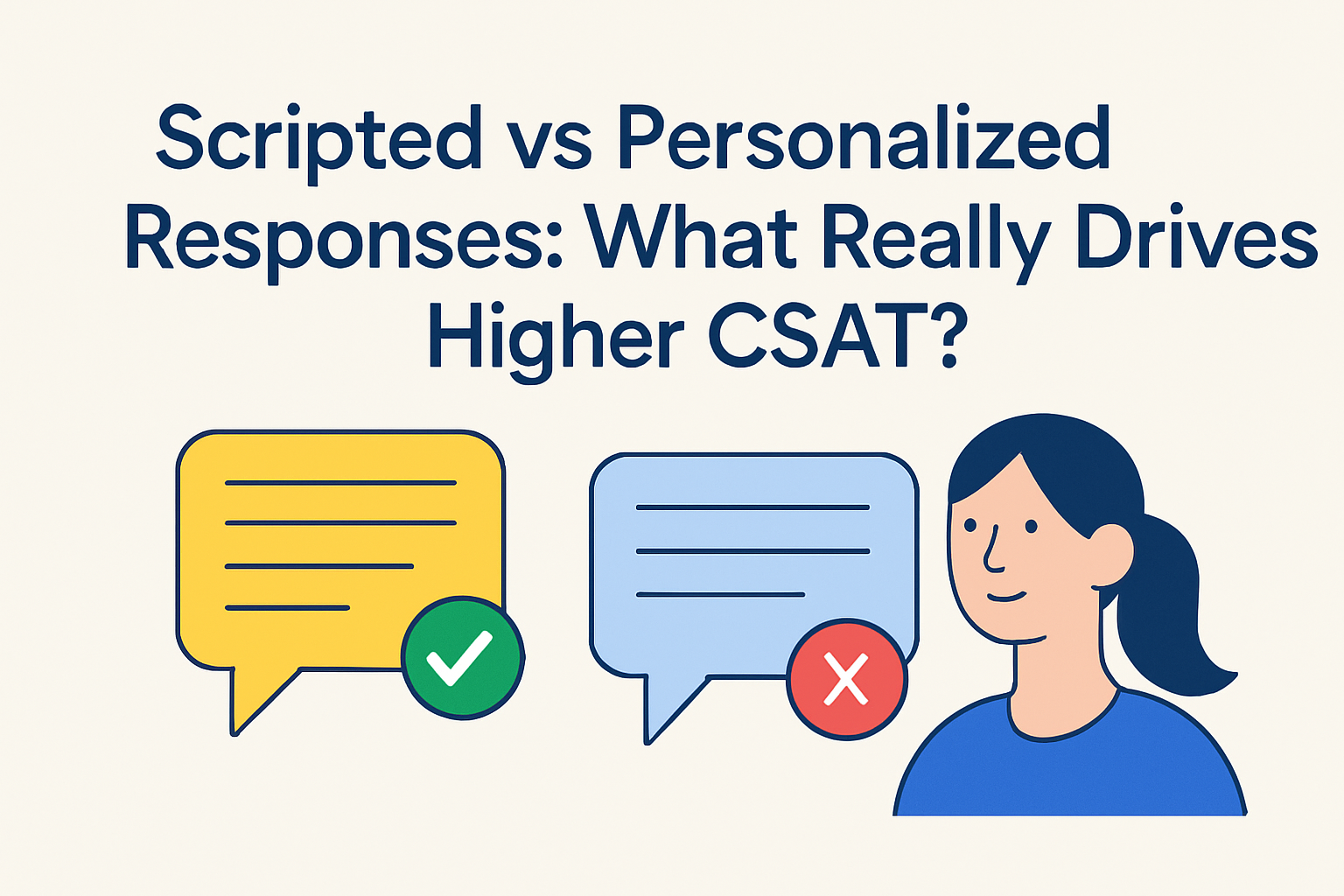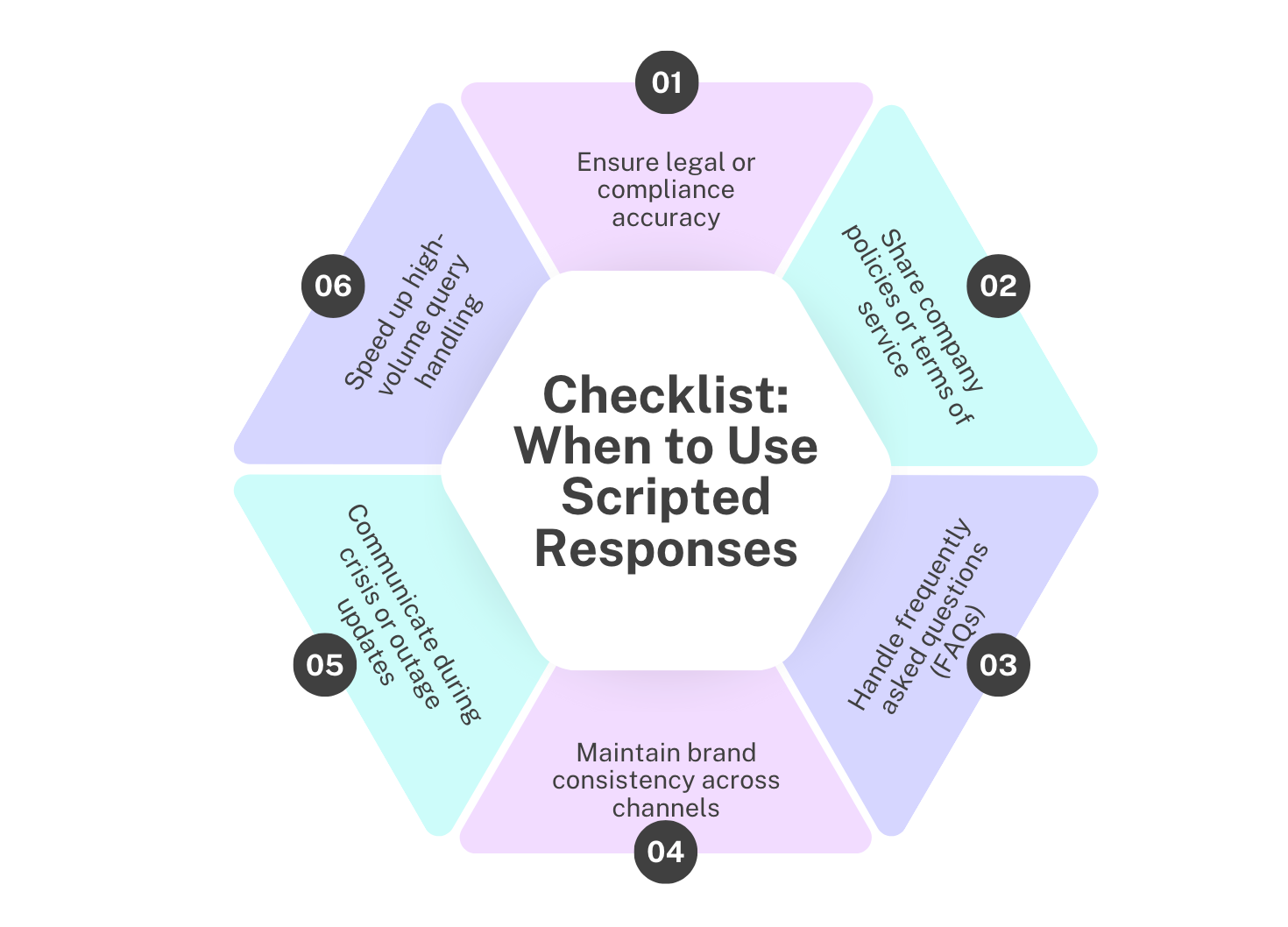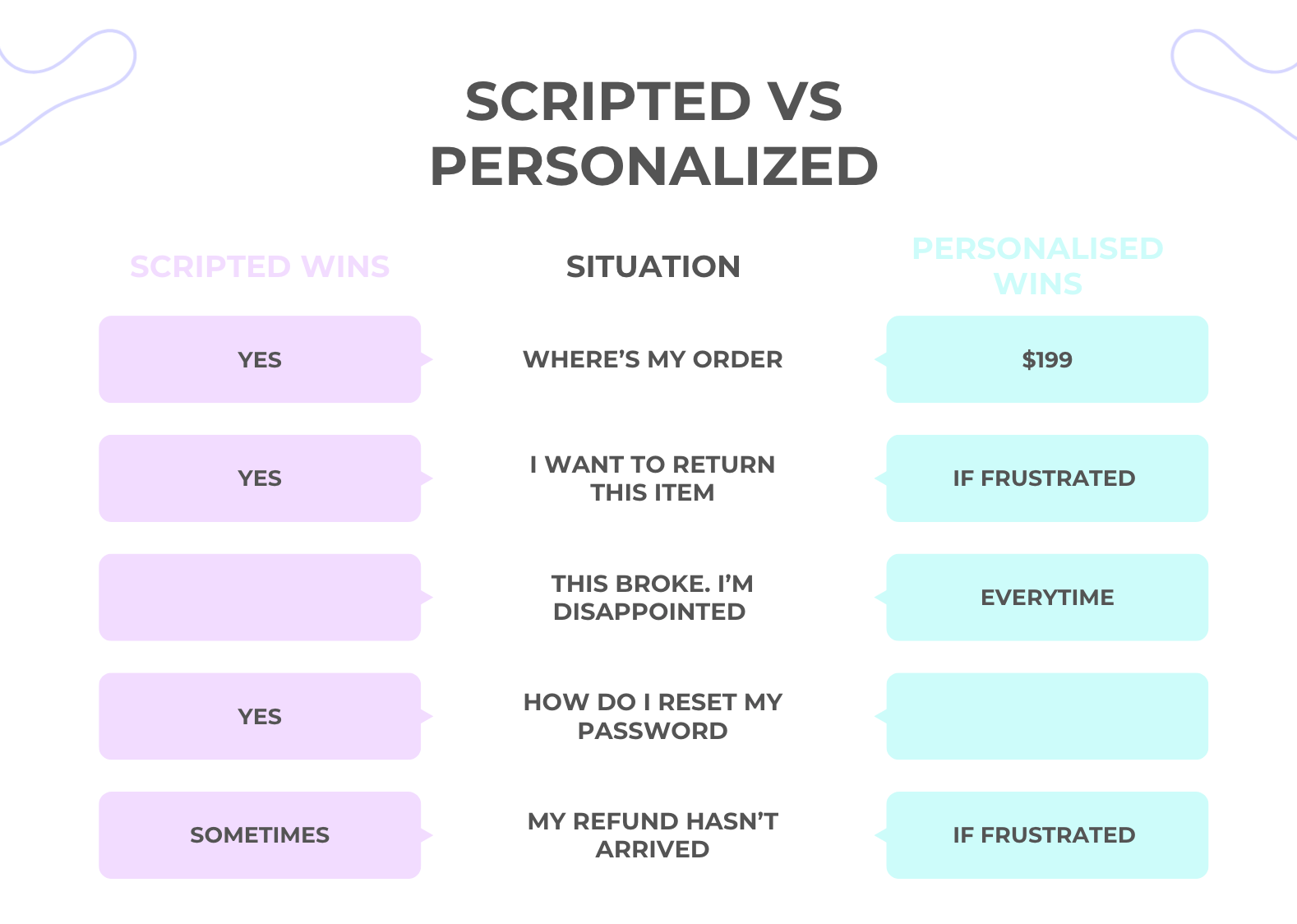Scripted vs Personalized Responses: What Really Drives Higher CSAT?
Picture this: It’s 11:30 PM. You’ve got a problem with your recent order and finally get through to support. But instead of someone actually helping, you get a robotic, pre-written response that doesn’t even relate to your issue or even worse we'll get back to you in a few hours. Frustrating, right?
Whether you’re dealing with Best Buy’s customer service, chatting with a DTC brand on Instagram, or emailing a SaaS tool for help, one thing’s clear: the tone, relevance, and responsiveness of your support team can make or break customer satisfaction.
That’s where the debate begins: Scripted vs. Personalized Responses, which one actually drives a higher CSAT (Customer Satisfaction Score)? If you're building a world-class customer experience, using AI-powered assistants, outsourcing live chat, or hiring full-time reps, this is the question worth asking.

What is CSAT & Why It’s Crucial in 2025
CSAT stands for Customer Satisfaction Score, a simple yet powerful metric that asks one key question: How satisfied were you with your recent interaction?
Customers rate their experience, usually on a scale of 1 to 5. That score becomes a measurable indicator of whether your support team is delighting or disappointing.
But in 2025, CSAT isn’t just a feel-good number.
According to Salesforce and Zendesk, 86% of buyers are willing to pay more for a better customer experience, and a single negative interaction can drive away 30% of customers for good.
CSAT now directly impacts revenue, retention, and brand reputation.
Great service isn't about how fast you reply, it's about how well you listen.
Scripted Responses: When They Work, and When They Don’t
Scripted replies are pre-written templates used by support teams to standardize communication. They're popular in call centers, helpdesk software, AI-powered bots, and outsourced support operations.

When Scripted Replies Work:
- High-volume questions: Think password resets, shipping updates, or “how do I track my order?”
- Legal compliance: In banking, insurance, and healthcare, scripts help teams avoid liability.
- Consistency across teams: Especially for customer support outsourcing partners.
- Faster first response time: Ideal for live chat support outsourcing where customers expect a reply in seconds.
When They Fall Flat:
- Emotional issues: When someone’s product broke or a promise wasn’t kept, they need empathy & solution to their problem not a copy-paste templated answer.
- Misalignment of tone: A cheerful reply to an angry message comes off as tone-deaf.
- Repeat issues: When a customer has to explain their problem twice and gets the same canned reply.
- False humanization: It’s worse when a human sounds robotic. Customers lose trust quickly.
A frustrated buyer once said: “Using Best Buy customer service felt like talking to a wall. The replies were so generic, I ended up tweeting just to get a real response.”
This kind of feedback is common when support teams over-rely on templates and under-deliver on listening.
Personalised Responses: The Secret to Higher CSAT
Personalization in support goes far beyond using someone’s name. It’s about understanding their problem, adapting your tone, and providing relevant context based on their history.
Why Personalization Boosts CSAT
- Builds trust: Customers feel seen and valued.
- Faster resolution: Tailored replies reduce back-and-forth.
- Encourages loyalty: Drives repeat purchases, referrals, and 5-star reviews.
- Aligns with modern expectations: 80% of consumers now expect personalization in support.
Consider this:
No7 Beauty Company, a skincare brand under Walgreens Boots Alliance, replaced generic responses with an AI-powered advisor that offered personalized support. Despite slightly slower response times, they saw a significant lift in customer satisfaction and a 48% increase in average order value.
Customers didn’t mind waiting a little longer, they valued being truly understood.
What Do Customers Actually Want? (Hint: It’s More Than Speed)
The 2025 Zendesk Customer Experience Trends Report says:
- 80% of customers prefer personalized service
- 50% still expect a reply in under 2 minutes
This isn’t a contradiction, it’s a cue.
Today’s best brands balance personalization and efficiency. It’s not about choosing one over the other, it’s about knowing when to switch.
Hybrid Models: Where Smart CX Lives
Forward-thinking brands use a hybrid support model where:
- AI handles repetitive queries: FAQs, returns, status updates.
- Humans jump in for nuance: Complaints, feedback, technical issues.
- Scripts serve as guidelines, not rigid responses.
Some even use tiered personalization: light personalization for standard issues, deep personalization for VIPs or escalations.
This model keeps costs low while keeping CSAT high.
Scripted vs Personalized: A Real-World Comparison

Comparison table showing when scripted vs personalized customer support performs better across scenariosPro tip: The best support agents don’t choose one approach, they switch gears based on the customer’s tone and issue.
Scaling Personalization: Tools & Techniques
Want to deliver personalized support at scale without hiring a 50-person team? Here’s what works:
1. AI-Powered Customer Service Software
Leverage tools like ChatGPT-powered support bots that offer dynamic responses based on tone, context, and previous interactions.
2. Chat Desk + Live Chat Plugins
Use platforms that allow real-time adjustments in language, tone, and format.
3. CRM Integration
Know your customer’s order history, preferences, and previous issues so your replies are informed, not guessed.
4. Customer Care Outsourcing with Blended Teams
Hire customer support outsourcing partners that combine trained agents with automation, offering a smart, empathetic approach.
5. Back Office Support & Internal Notes
Give agents access to internal knowledge bases and prior chat notes to personalize responses more quickly and accurately.
What About Cost?
Brands often ask: “Can we afford to personalize support?” But the better question is:
Can you afford not to?
Low CSAT leads to negative reviews, refund requests, and churn. High CSAT increases retention and LTV.
If you're still weighing the ROI of personalization, check out our detailed breakdown of how tailored support boosts LTV and reviews.
A cost-effective approach? Outsource ecommerce customer service for high-volume interactions, and reserve in-house support for more sensitive ones.
Final Verdict: What Drives Higher CSAT?
The answer isn’t black or white.
Scripts are useful. Personalization is powerful. Context is everything.
In 2025, great customer service doesn’t feel like customer service, it feels like a conversation. Whether it's powered by an AI assistant or a remote agent, the best support is fast, human, and thoughtful.
If you’re scaling support, hire reps who can personalize, and invest in tools that help them do it faster. Because in the end, it’s not just about solving problems, it’s about making customers feel valued while you do it.